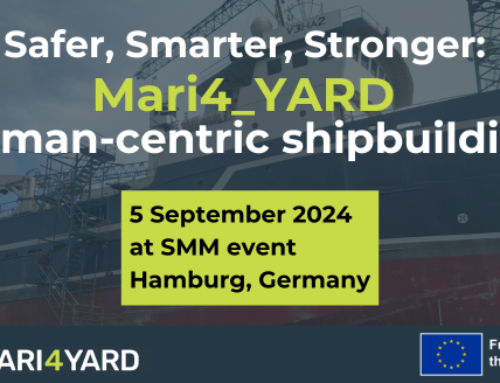Innovation, determination and collaboration are the keywords that Mercedes Fernández, Innovation Manager at Telefónica España, has chosen to describe the latest European Industry 4.0 flagship and the introduction of the Europe’s first 5G-powered shipyard in Ferrol, Spain. “5G, with its high performance and capacity, has a great potential” he says “As we have proven in this journey, made possible thanks to the collaboration with Ericsson, Telefónica España, Navantia, Cinfo and Idronia, we can have an improving efficiency in vessel maintenance and construction”. Everything started in 2017, when Fernández received a Ministry of Economic and Digital Affairs’ call to promote the development of 5G industrial use cases and encourage the wider digital transformation of Spain’s economy. Here are some 5G use cases:
1. Remote Technical Assistance
Repairing a boat is a long process that can require weeks or months because of the complexity of the machinery, devices, and industrial processes involved. To shorten the times and avoid a disruption in the industrial chain, 5G, thanks to the low latency and high real-time processing capacity, allows a remote expert to guide a non-specialist worker to diagnose and carry out any necessary maintenance or repair work using specialist equipment. Worker and specialist work in parallel in real-time, communicating also through animated 3D models and illustrative pictures.
2. Visualisation of Virtual Parts in a real environment
Paying attention to inaccuracies is essential in the manufacturing phase. Introducing a use case that allows workers to visualize and overlay design parts onto already constructed sections with AR glasses in real-time, a huge amount of time spent planning that ship parts fit together with millimetric accuracy is now spared.
3. Supporting the modular shipbuilding process
Leveraging the high bandwidth of 5G, and the huge power and computing capacity of edge computing, there is a faster and more optimized solution to verify that all the ship’s sections fit together. First, 3D laser scanners capture a blueprint-like image of the different building blocks to be assembled, generating gigabits of information across the three-dimensional space. Second, this layered, complex data is then sent via streaming to computers placed on the edge of the mobile network, allowing specialists to instantly get a full picture of the vessel.
As reported by Ericsson, 5G set to cover 60% of the world’s population by 2026 so it is essential to going on “observing, listening and working together to propose innovative solutions, always making industrial ecosystems working closely together”.



